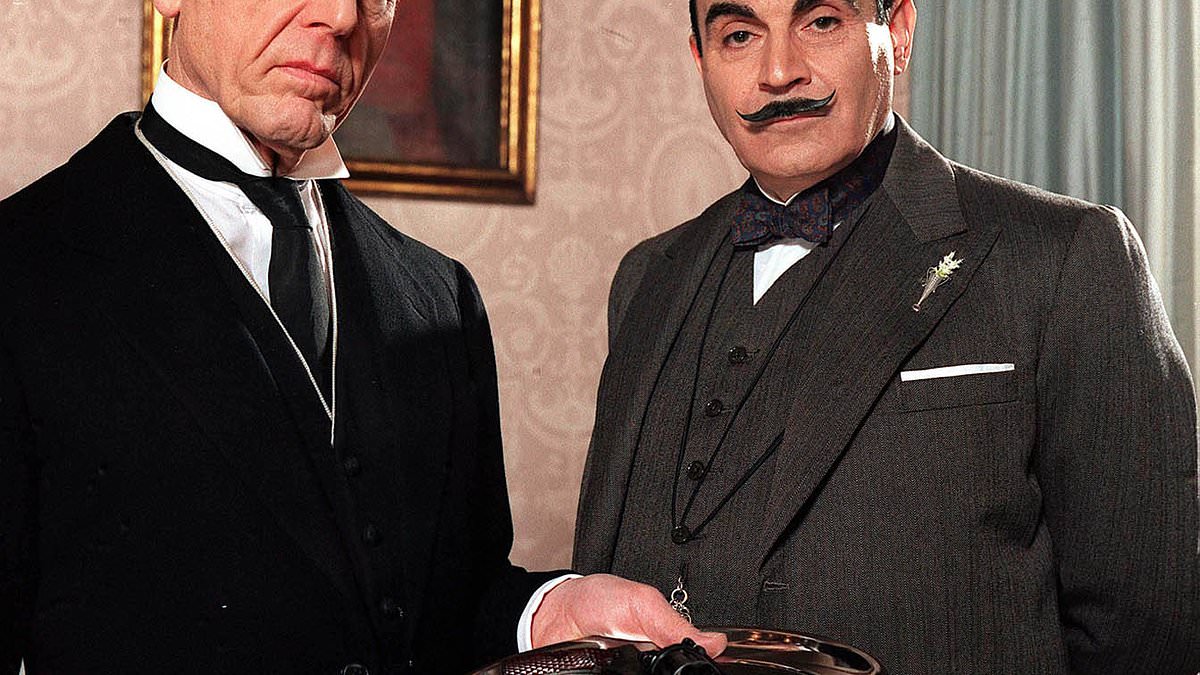Question: Was Agatha Christie’s Hercule Poirot based on an earlier fictional character?
By her own account, Agatha Christie’s key inspirations for Poirot were Sir Arthur Conan Doyle’s Sherlock Holmes and Joseph Rouletabille, an amateur French sleuth from the pen of Gaston Leroux, better known as the author of The Phantom Of The Opera. It was Leroux’s The Mystery Of The Yellow Room that instigated a conversation between Agatha and her sister Madge about writing a detective novel.
Agatha further reflected that contemporary events persuaded her to make her detective Belgian. In An Autobiography, she wrote that during World War I, ‘We had quite a colony of Belgian refugees living in the parish of Tor. Why not make my detective a Belgian?’
Agatha was honest about the influence of Sherlock Holmes. She knew she was ‘writing in the Sherlock Holmes tradition — eccentric detective [Poirot], stooge assistant [Captain Hastings], with a Lestrade-type Scotland Yard detective, Inspector Japp.’
The similarities were obvious: Poirot and Holmes are idiosyncratic characters with quirky personal habits, as well as being brilliant detectives with keen powers of observation and deduction. They also share a flair for the dramatic and an air of superiority over their contemporaries.
There are, however, clear distinctions: Poirot’s methods are more psychological while Holmes relies on forensics and logical reasoning.
This is where Rouletabille comes in; he pays close attention to the psychology of the suspects, often relying on understanding their minds to solve the mystery.
Alison McRae, Southend-on-Sea, Essex
Question Are there descendants of the Bach family who still work in music today?
Johann Sebastian Bach’s (1685-1750) line died out in the late 19th century. Bach had a large family with 20 children from two marriages, but many of his descendants did not survive into adulthood or did not have children of their own.
Q: Which hit songs took the least time to write? Which took the longest?
Emma Cowan Ruabon, Wrexham
Q: Was the East German sports doping programme mandated by the government?
L.L.Miles, Nottingham
Q: Following the end of World War II, were all the destroyed and abandoned tanks, artillery pieces and vehicles in Burma recovered as scrap metal or just left behind?
Michael J. Locke, Gillingham, Kent
A number of his progeny were involved in the music world: Catharina Dorothea was a noted singer, and Wilhelm Friedemann, Carl Philipp Emanuel, Johann Christoph Friedrich and Johann Christian (the ‘London Bach’) were all composers.
Bach’s line is thought to have ended with his great-granddaughter, Carolina Augusta Wilhelmine Ritter, who died on May 13, 1871.
Unfortunately, some other great composers also don’t have any living descendants today. Beethoven, Brahms, Tchaikovsky and Ravel all died childless, while Mozart had two sons who survived infancy but they never married or had any known children.
Caroline Finch, Gloucester
Question What was the Romans’ favourite food?
The basic Roman diet was mainly based on cereals, vegetables, legumes and cheese.
A key ingredient was garum, a fermented fish sauce made from anchovies cut open and left to rot in the sun. The Italian fish sauce colatura, the Thai sauce nam pla, and the Vietnamese nuoc mam nhi are still made similarly today.
As the Roman Empire expanded they increasingly introduced spices, so their cuisine was very similar to the current Middle Eastern and North African one.
The poorest Romans ate little other than wheat, either crushed and boiled with water or as puls, which was like cream of wheat. Bread and honey was a staple for the middle classes.
The diet for wealthy Romans was far more exotic. De Re Coquinaria, by Marcus Apicius, provides significant insights into Roman culinary practices. In his Natural History, the ancient historian Pliny the Elder tells us that ‘Apicius, the most gluttonous gorger of all spendthrifts, established the view that the flamingo’s tongue has a specially fine flavour.’ The rich would consume just about anything that flew, including peacock, crane and turtle dove.
One of the more grotesque offerings from Apicius was pig foie gras. To manufacture this delicacy, you must first starve your pigs, then allow them to gorge on dried figs. Afterwards, feed them as much wine or mead as they can drink, allowing the figs to expand in their stomachs and ferment, thus killing them.
Their substantially enlarged livers were then used to make fig-fed pork liver: liver in a wine sauce made with pepper, thyme and lovage. Other delights featured in the book include sow’s womb and pig’s paunch.
Kevin Potts, Malmesbury, Wiltshire
